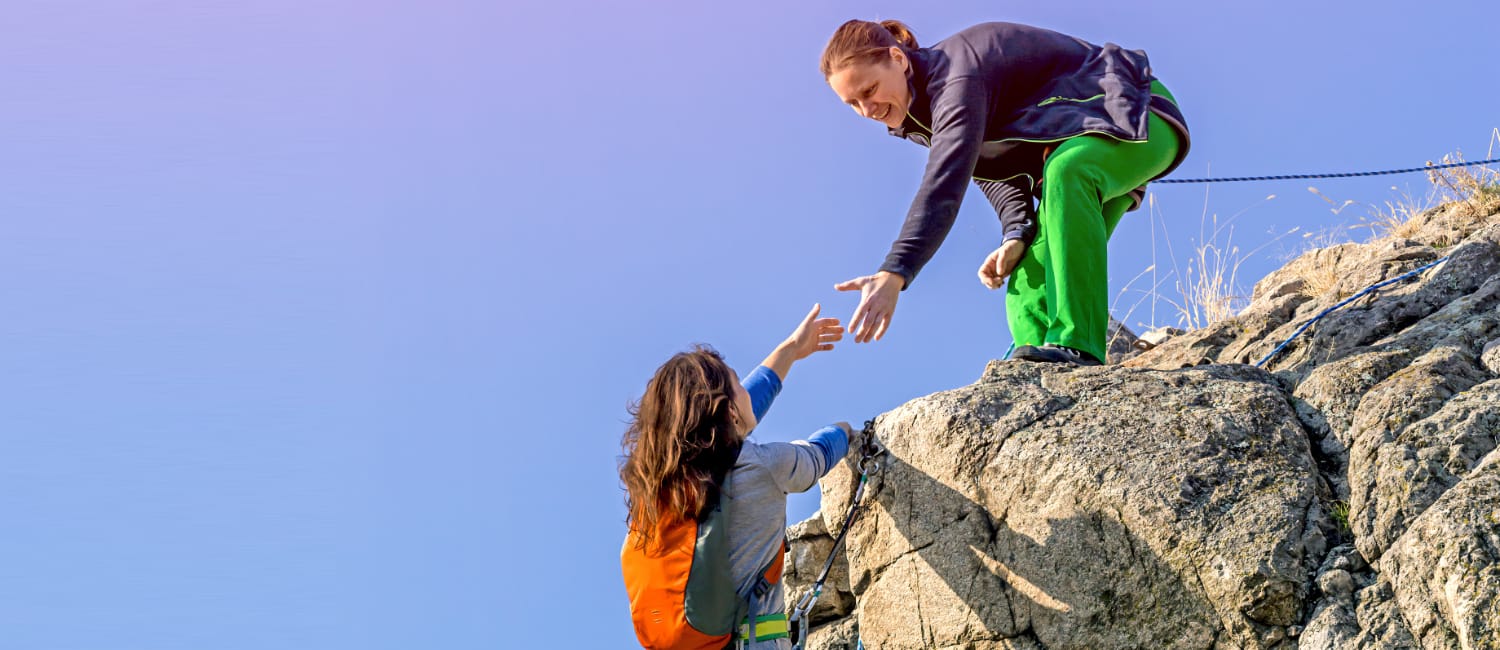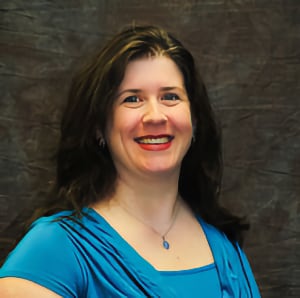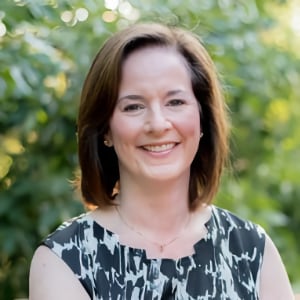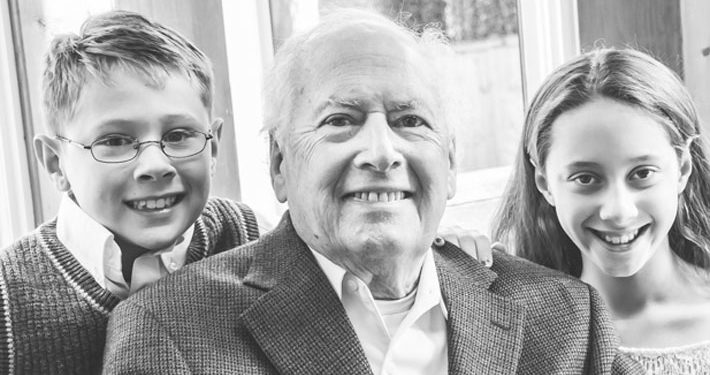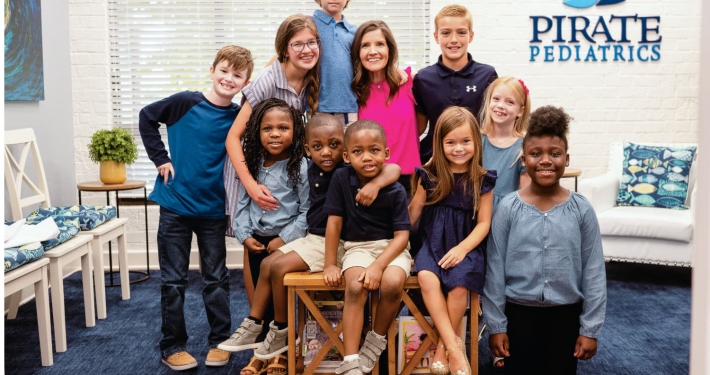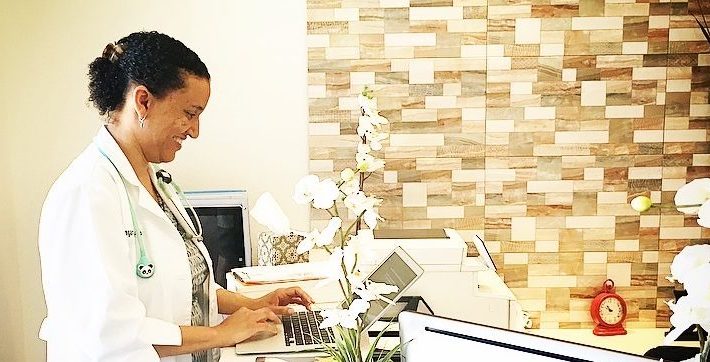What’s it like to dream big in independent practices? Is big actually better? Pediatricians working with a large team at multiple locations report a range of benefits: A sense of camaraderie, the ability to hire non-medical staff, a certain flexibility to seeing patients and covering time off. There are challenges as well – the biggest being coming to consensus on major decisions — but when there’s a sense of trust within the group it’s possible to move forward together for the good of patients and families.
Meet leaders at two large independent practices in different parts of the country: Memphis Children’s Clinic in Memphis, Tennessee, with upwards of 30 pediatricians on staff, and Pediatric Associates of Mt. Carmel in Cincinnati, Ohio, which has 10 full-time and one part-time physician in the practice. Here, they share more about their practices’ goals for the future, as well as how they’re adapting and changing to better serve patients and families in their communities.
Memphis Children’s Clinic
Patients and families love the flexibility that Memphis Children’s Clinic provides. The six office locations in the greater Memphis, Tennessee, area allow easy access to urgent care when a child is sick, while also providing continuity of care for routine visits, says Dr. Jennifer O’Bryan, a pediatrician and practice partner at Memphis Children’s Clinic.
“I’ve had patients who have moved closer to a different office but still come to me for their care,” she says. “Some families go to the office nearest to them for their sick visits when needed and come to me for their wellness. We allow that to happen organically.”
The doctors themselves also appreciate the flexibility that having 34 pediatricians on staff provides. Not only is there a large pool to pull from for coverage for on-call hours, vacation time and days off, they have the staff to manage the business side of the practice.
“We have a paid practice manager who’s not a physician,” she says. “He’s hiring and vetting staff and running the 401k — all of that stuff. I could learn how to do that, but then I can’t see a patient. All of that time would be taken away from seeing patients.”
This staff delegation ensures that pediatricians spend the bulk of their hours on patient care. Memphis Children’s Clinic has four to five billers on staff at any given time, as well as a call center to handle phone triage and scheduling. The call center also serves as a backup for staff at individual offices, which goes a long way towards keeping operations running smoothly, especially when the busiest practices in the group see more than 2,000 patients per month, six days per week.
Although Memphis Children’s Clinic has been an institution in the city for over half a century, and is celebrating its 70th anniversary this year, it has grown organically over time as Memphis itself changed. In the mid-1950s, the practice had one office and two pediatricians in the Whitehaven area of Memphis, near Graceland. Then in the 1960s, like many cities in the mid-Atlantic region of the United States, families began leaving Memphis for suburbs.
“As families moved, Memphis Children’s Clinic tried to keep up,” says Dr. O’Bryan. “We’re geographically very diverse. As the city grew and spread out, we did too.”
They kept the office in Whitehaven but began expanding to serve the needs of the community. Now, the six locations stretch from Bartlett in the northern part of the city to Olive Branch, just over the state line in Mississippi southeast of Memphis. There’s also the original location in Whitehaven as well as offices in Germantown, Southaven, and Kirby. Most offices are within 15 to 20 minutes of each other, while it takes about 45 minutes to drive between the two that are the most geographically distant.
Even as the practice grew, Memphis Children’s Clinic held firmly to its roots in the community. The group’s longest-serving partner, now in his mid-80s, is still on staff, reports Dr. O’Bryan. Families have been bringing their children to the practice for generations, a testament to the stellar reputation Memphis Children’s Clinic has built over time.
“[Many patients] are now bringing their grandchildren to Memphis Children’s Clinic, when they were a Memphis Children’s Clinic patient themselves,” she says.
That name recognition is a plus, and the size of the group makes it easier to maintain that visibility.
“We’ve practiced for a long time,” she says. “The communities know that we’re here — having a large practice allows you to maintain that reputation.”
The size of Memphis Children’s Clinic also makes it easier to accommodate a diversity of patients, as the payments with private insurance tend to balance out the lower reimbursements Medicaid provides.
“We’re able to take a significant amount of Medicaid, which we think is important,” says Dr. O’Bryan. “That’s really difficult to do if you are solo or two doctor practice — it’s hard to get the right mix.”
“It requires a certain amount of trust in your partners. If you have been used to working fiercely on your own, it can be difficult to surrender some of that control to a larger group.”Dr. Jennifer O’Bryan
Another challenge as a solo or small practice: Finding the time to teach. At Memphis Children’s Clinic, the option is accessible to pediatricians in part thanks to the support staff and the number of doctors in the practice spreading out the workload.
“It’s 100% volunteer – no one’s obligated to do this, and not everyone does,” she says. “But I would say most of the offices have at least one or two doctors who have a med student with some regularity. And then we have a pretty close connection with the residency program here in town.”
One of the challenges to running a large practice? Coming to consensus on decisions.
“How do you get 25 people to agree on anything? Yeah, it’s a challenge,” Dr. O’Bryan laughs.
The practice manager can make decisions independently on certain things, while larger issues require the management team to get involved. This group, which includes Dr. O’Bryan, four additional physicians, and the practice manager, meets monthly. They set the stage for the large group meetings, which happen every other month and include all of the pediatricians on the partner track, roughly 25 individuals at any given time.
Major changes to the practice require a vote from the large group and a change to the practice bylaws. One recent vote allowed for personal leave.
“If you’re a partner and you needed to take a leave for any reason – you wanted to go on a mission trip, you wanted to take a sabbatical, you wanted to write your book – that was not accommodated in the bylaws,” she says. “We discussed it and voted and now partners can take up to a 12 month sabbatical without pay upon approval of the majority of the group and stay on the partner track.”
As Memphis Children’s Hospital looks to the future, Dr. O’Bryan says one priority will be scaling up business operations across the locations.
“There are certain inefficiencies in the way we practice because we are in some ways still managing our group as though it was two locations and eight doctors, and we are no longer that,” she says. “So I think the next step is to try to create more of a system.”
Equally important is maintaining the independence and autonomy the group deeply values.
“We don’t have to do everything the way everyone does it,” Dr. O’Bryan says. “If we wanted to do that, we would get bought by some hospital group and we don’t want that. It is very important to all of us that we can do what we want to do. I don’t want someone telling me how to be a doctor with my patient.”
She values the support working with the group provides — being able to discuss patient concerns and brainstorm solutions, as well as mentor younger physicians joining the practice. The partners rely on each other to work together to make decisions for the good of the team, so strong relationships are key.
“It requires a certain amount of trust in your partners,” she says. “If you have been used to working fiercely on your own, it can be difficult to surrender some of that control to a larger group.”
At the core, Memphis Children’s Clinic prides itself on running a large practice efficiently while keeping close ties with families, making sure they’re at the center of every decision. It’s why Dr. O’Bryan has stayed with the practice since her own residency training.
“One of the main reasons that I wanted to work for Memphis Children’s Clinic was that knowledge of the type of medicine that they practice,” she says.
“In this community, having a large group of independent offices, we feel like it serves the community better. You can be much more nimble and serve your patients a little bit better than you can in a large institution.”Dr. Lynn Peters
Pediatric Associates of Mt. Carmel
The pediatricians at Pediatric Associates of Mt. Carmel Associates in Cincinnati, Ohio, have an amiable partnership that gets them through tough times and makes work fun.
“We have a large group that gets along and likes each other,” says Dr. Lynn Peters, MD, FAAP, a pediatrician and practice partner at Mt. Carmel. “We always say we are one big, happy, dysfunctional family.”
Ten full-time physicians are joined by one part-time pediatrician in a total of three locations in suburban Cincinnati: Eastgate, Batavia and Mason. Nine of the full-time pediatricians see patients in all locations, while one full-time physician and one part-time physician staff the newest location in Mason. It was added in November of 2021 to replace a former office. With the owners looking towards retirement, they struck a deal with Mt. Carmel to preserve the practice’s independence.
“There’s been a trend in our area for practices to ask the large children’s hospital to buy them,” says Dr. Peters. “We feel like that’s not great and wanted to [help them] stay independent.”
Now that the Mason office is up and running, the satellites allow Pediatric Associates of Mt. Carmel to accommodate patients across the greater Cincinnati area.
“We’ve had this model with the office and the two satellites to increase our geographic reach so we can go to the eastern counties through our Batavia office, which is about 10 miles or so from the Eastgate office,” she says. “And now we can branch over into the northwest side of Cincinnati with the newest office.”
Although patients may visit any location – and most choose one as their primary doctor’s office – odds are every family will visit the Eastgate location on occasion for its convenient hours.
“We’re an open practice so they can see any doctor they want at any location that they want,” she says. “So, some people will say ‘I need a checkup on Thursday’ and go with any available doctor, while some people will go wherever their favorite doctor is. And then I would say most every patient probably comes to the Eastgate office at some point, because we do have evening hours there and Saturday hours there.”
Pediatric Associates of Mt. Carmel was recently able to add a triple board-certified child psychiatrist to staff, seeing patients at the Mason and Eastgate locations. As the practice expands its reach, they also want to fill needs in the community.
“It has been an overall goal for us to incorporate mental health because it’s still difficult for patients to get family counseling,” says Dr. Peters.
A mental health therapist who is a licensed independent social worker provides counseling services at the Eastgate office. Another counselor recently joined the team, allowing the practice to expand counseling service to the satellite locations in the fall.
As they think about expanding and adding staff, the Ohio group’s size allows them to be nimble with their decisions. The nine full-time pediatricians are all partners in the practice – small enough to come to consensus, but large enough to cover each other’s vacations and staff three locations.
“We meet once a week,” she says. “That helps with communication and keeping things running.”
This management model has allowed them to seize on opportunities as they come. For example, the practice’s child psychiatrist worked with Mt. Carmel “on and off” for four years while she completed her training. Once it became clear that she would be a good fit for the group, they were able to move quickly to offer her a position when the time came.
“The thought was we’ll see if this works — works for her, works for us,” says Dr. Peters. “And we’re very happy we came to a mutual yes.”
Bringing in residents and medical students for training is central to the mission of Pediatric Associates of Mt. Carmel and has been since the practice’s founding in 1972. The group’s size allows for the flexibility to take on a range of trainees, from medical students and residents at Cincinnati Children’s Hospital to fellows in various specialties. Since Dr. Peters has a doctorate in osteopathic medicine, she takes on students working towards this degree.
“I’ve taken medical students, they’ll be with you for a month,” says Dr. Peters. “For the last couple of years, we’ve had a sports medicine fellow; we’ll have them for the year. We learn from them. They hopefully learn from us.”
Looking ahead, the practice’s partners expect to continue to prioritize providing mental health services to patients. They also want to increase their visibility in the community to continue to expand the number of families coming through the doors. Currently, the practice has roughly 12,000 active patients for all locations.
“We work with a marketing company on social media to get the word out about what we offer in terms of evening hours and Saturday hours and the range of services we provide,” says Dr. Peters.
As they put in motion plans to bring in more patients, they’re also expanding the age range of patients they see. Instead of ending visits with patients once they graduate high school, they are allowed to continue with Mt. Carmel until the age of 21 through the adult patient program. Parents can work with their kids to help them set up appointments and begin to take charge of their health, making it more of a smooth transition to adulthood.
“Up to 21 seemed reasonable,” she says. “We’ve had a really good response where families are happy as this helps [kids] take responsibility with their medical care.”
Above all, Dr. Peters says a top priority is maintaining the group’s independence.
“In this community, having a large group of independent offices, we feel like it serves the community better,” she says. “You can be much more nimble and serve your patients a little bit better than you can in a large institution.”
The COVID-19 pandemic showed just how important it is to be able to come together and make decisions quickly for the good of patients and families. Dr. Peters says the group was able to adapt to make sure protocols were in place so that families felt comfortable coming into the office for the care they needed – whether it was for illness or preventive health visits.
“We were able to make changes very quickly,” she says. “We didn’t have to wait for three levels of administration and higher ups to sign on. We changed what we do so much over the course of this past couple of years.”
Members of the “dysfunctional family” at Pediatric Associates of Mt. Carmel continue to show up for each other every day, making their practice a ‘go-to’ for families in the Cincinnati region. That family also makes coming to work fun for the pediatricians and staff, says Dr. Peters.
“I like that collaborative environment, which is of course easier done with a larger group,” she says. “It’s so nice to have all of the different perspectives.”
It’s those diverse viewpoints and opportunities for collaboration that energize the pediatricians at Pediatric Associates of Mt. Carmel and Memphis Children’s Clinic. In larger practices that function well, it can be the best of both worlds: They combine the benefits of a team and the flexibility that an independent practice provides, all in service to excellent patient care.
A resident of Burlington, VT, Erin Post has a BA degree in English from Hamilton College, and is a graduate of the writing program at the Salt Institute for Documentary Studies. She is currently working on her master’s in public health at the University of Vermont. In her spare time, she likes to bike, ski, hike, and generally enjoy the Green Mountains of Vermont.


